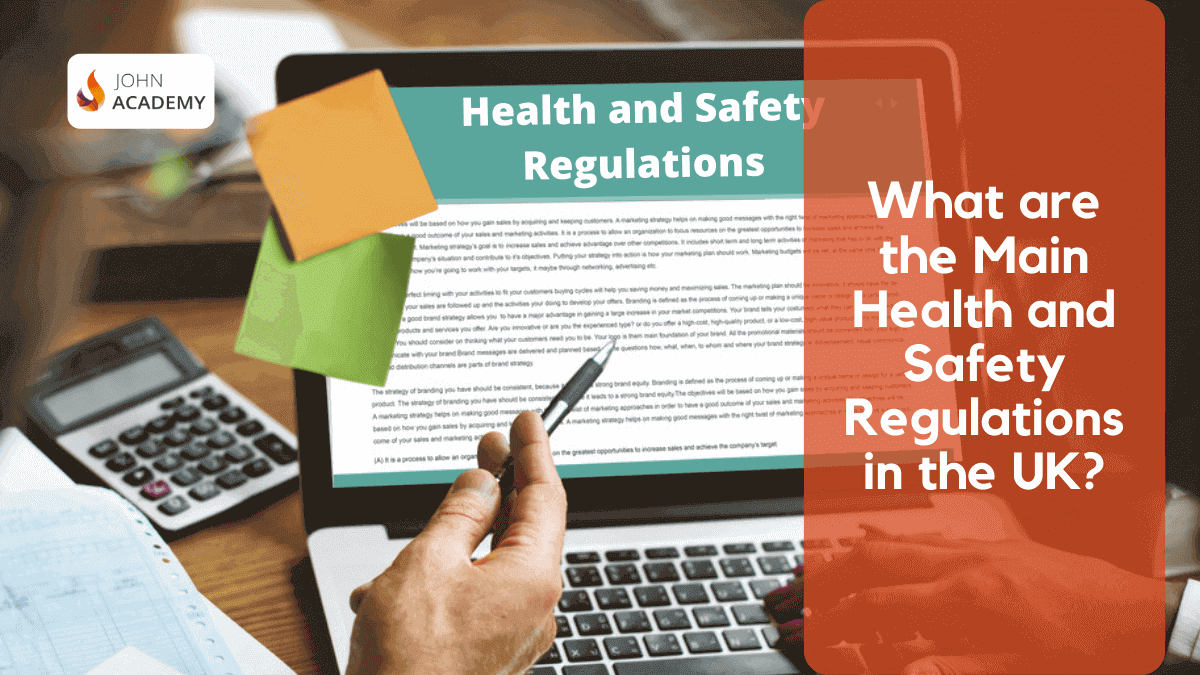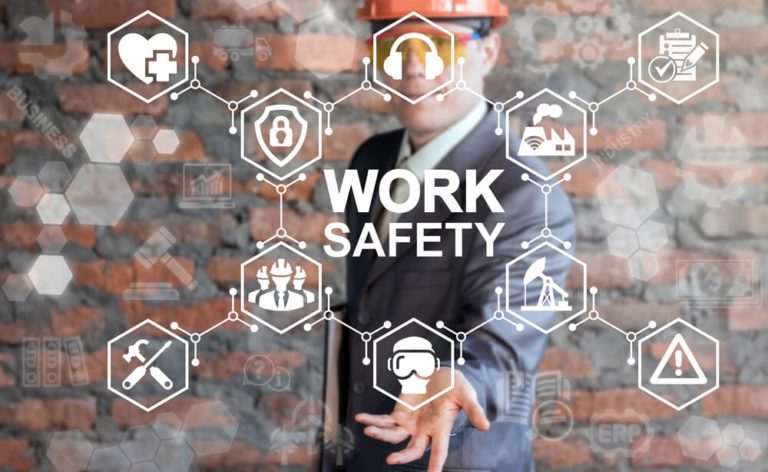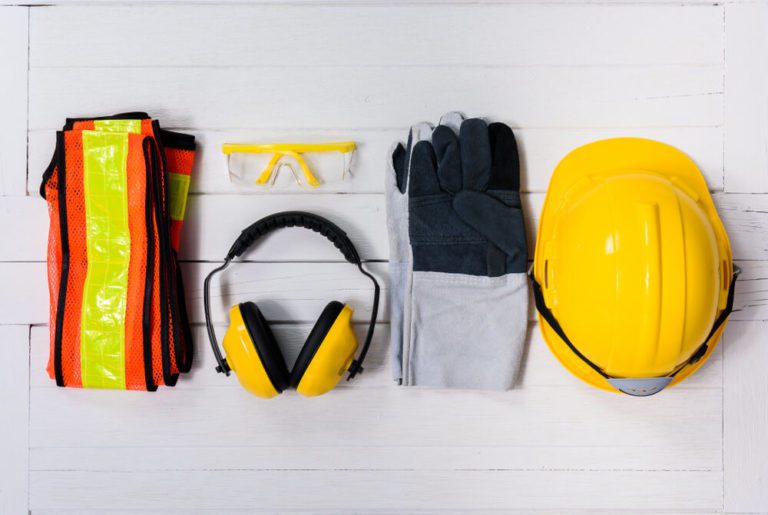
Workplace health and safety regulations are essential for every organisation or company. The purpose of these laws is to protect employees from workplace injuries, incidents, and disease.
Whether you are a small business owner or the head of a big organisation, you need to follow the regulations. Because anyone can get hurt in your workplace, and it can lead to serious health injury. Also, failing to provide a safe environment in your workplace leads to punishment by the government. Do you know that Great Britain lost £16.2 billion and 38.8 million workdays in 2020 due to workplace injuries and accidents?
There are certain benefits of a safe and healthy workplace environment. For instance, it can improve your workplace safety to conduct day-to-day business. Also, improve your employees’ productivity and save your company from lawsuits. So, workplace health and safety regulations are important for your business.
Is your place safe to work in and follow the health and safety regulations? Stick to this blog to know the main health and safety regulations in the UK
Table of Contents
What are workplace health and safety regulations?
Workplace health and safety laws are the guidelines and procedures for the employers’ and employees’ rights. They help ensure safety and welfare for employees in the workplace.
The aim of these regulations is to ensure a safe working environment. Also, these laws play a great role in reducing the risk of accidents, injuries and fatalities on the job. That’s not all; it also protects the health of customers and the general public.
In the UK, there are a lot of laws and guidelines for employers. And employers must follow and meet the health and safety obligations. In the UK, the Health and Safety Executive is the governing body for health and safety regulations. They advise different companies on legislation and guidance and enforce them.
Why do UK workplace health and safety regulations matter?
There’s no denying the importance of workplace health and safety. It protects workers, visitors and customers from harm and ensures a safe work environment. However, an unhealthy and unsafe work environment can harm employees’ health. Also, they can cost an organisation:
- Reputation.
- A lot of money.
- Employee morale.
On the other hand, a good workplace environment can enhance employees’ trust, productivity, and loyalty. According to Mental Health First Aid (MHFA):
- 1 in 4 UK employees has a physical health condition.
- 42% of those employees who have a health condition say that it affects their work.
- 1 in 10 employees has a musculoskeletal condition.
- 1 in 8 employees suffers from a mental health illness.
- 33% of those with mental illness say it is long-term.
Although, most of the above conditions may be absent in new employees. But, if they have it, the employer must not aggravate or worsen the pre-existing illness or injury.
Benefits of good workplace environment
The UK government prepared a lot of legislation and guidelines for employers and employees. The purpose of these laws is to provide a safe and healthy work environment. There are a lot of benefits of a safe and healthy workplace environment. For example:
1. It protects employees from physical danger.
It is the primary reason for creating health and safety laws and guidelines. A good guideline protects employers and staff from injury and illness in the workplace.
2. It minimises employee absences from work.
A safe workplace means less risk of work-related illnesses and injuries. So, this means fewer workers’ absences from work. Employers also have the chance to save money on the direct costs of absences.
For example, if an employee gets injured in the workplace, the employer has to hire another employee to maintain the same productivity until the injured person is recovered. Also, the employers have to pay the salary for the newly hired employee.
3. It improves workers’ productivity.
A safe and healthy work environment improves employee morale and overall productivity.
4. It saves money for the company.
A good and healthy workforce means less absence from work and more productivity. Also, the company doesn’t have to recruit and spend money on the new recruitment process and training. Thus, the overall company benefits will increase.
5. It protects a business from lawsuits.
In the UK, the Health and Safety Executive advises on health and safety and enforces them. But, if a company fails to take its obligations seriously, the courts punish them. Also, sometimes courts make an example of others by fining them.
What are the main health and safety regulations?
A variety of laws protect the health and safety regulations at the workplace. According to these laws, employers and employees have certain rights and responsibilities.
Employers must follow the laws; otherwise, there could be legal action from the government. Also, these lawsuits can damage a company’s reputation and cost huge money.
1. The Management of Health and Safety at Work Regulations 1999
They are also known as the ‘Management Regs’. These regulations came into effect in 1999. Employer primary duties and responsibilities under the Regulations include:
- Making health and safety risk assessments in the workplace.
- Taking appropriate steps to minimise the risks.
- Appointing a competent person to oversee and maintain workplace health and safety.
- Providing the staff with adequate information and training on workplace health and safety.
- Create a document in which it clearly should state that employers are complying with health and safety policies.
Employees duties and responsibilities under this regulation:
- Report any health and safety shortcomings.
- Report incidents and accidents in the workplace.
- Use equipment under training and instruction.
- Take care of your health and safety and the safety of anyone affected by your work.
2. The Workplace (Health, Safety, and Welfare) Regulations 1992
These regulations came into force in January 1993. According to these health and safety regulations, the employers need to provide:
- Adequate lighting, heating, ventilation and workspace. They also need to keep them in a clean condition.
- Certain staff facilities, including toilets, washing facilities and refreshment.
- Safe passageways. For example, to prevent employees from slipping and tripping.
3. The Health and Safety (Display Screen Equipment) Regulations 1992
These health and safety regulations are to protect workers from the health risks associated with display screen equipment. These imply an employee who:
- A regular user of DSE equipment in the workplace, or
- Relies on DSE equipment as part of their job.
So, it covers you if you use a screen for an hour or daily users. Employers are required to:
- Make a risk assessment in the workplace for DSE users. After that, employers need to reduce the identified risks.
- Ensure DSE users take ‘adequate breaks’ from time to time.
- Provide regular eyesight tests.
- Provide workers with health and safety information.
- Ensure that employees have access to adjustable furniture in the workplace.
- Demonstrate that they have proper health and safety procedures. And it can reduce risks associated with DSE work.
4. The Personal Protective Equipment at Work Regulations 1992
Employers should provide appropriate PPE to protect employees from hazards at the workplace. According to these health and safety regulations, the employer has to:
- Ensure that PPE is offered free of charge to the employees.
- Provide the employees with other safety equipment. For example, the employer should give employees:
- protective face masks,
- goggles,
- safety helmets,
- gloves,
- air filters,
- ear defenders,
- overalls and protective footwear.
- Give employees information, training and instruction on using any risky equipment.
5. The Manual Handling Operations Regulations 1992
These regulations require employers to:
- Avoid any activities at the workplace that can potentially harm employees.
- Make assessments of manual handling risk. After that, they should try to reduce the risk of injury. While assessing the risk, the employer should consider the task type, load and workers capability.
- Give employees adequate information about the job.
6. The Provision and Use of Work Equipment Regulations 1998
The Provision and Use of Work Equipment Regulations 1998 laws require employers to:
- Make sure the safety and suitability of work equipment for the purpose for which it is provided;
- Appropriately maintain the equipment. It doesn’t matter how old the equipment is.
- Provide employees with the necessary information, instruction and training on how to use the equipment.
- Protect workers from dangerous machinery parts.
7. The Reporting of Injuries, Diseases and Dangerous Occurrences Regulations 1995
Employers must report any work-related incident, injury and disease to the Health and Safety Executive (HSE). If it’s not possible, they should report to the nearest local authority environmental health department. They should report the following injuries or illness:
- The death of any person;
- Any specified injuries such as fractures, amputations, eye injuries.
- Over seven-day injuries. A workplace injury relieves a person from working for more than seven working days.
- Reportable occupational diseases, such as occupational asthma, carpal tunnel syndrome.
- Near miss incidents.
8. The Working Time Regulations 1998 (as amended)
These health and safety regulations discuss the working time and the employment of young workers (under 18 years of age). These laws cover an employee’s rights to annual leave, work breaks, and limiting the weekly working hour. Critical protections for adult workers include:
- A 48-hour maximum working week.
- Minimum daily rest periods of 11 hours.
- A 20-minute daily rest break after six hours’ work.
For young workers (workers aged 15 to 18):
- after working more than 4.5 hours, an uninterrupted 30 minutes rest break.
- 12-hour daily break in each 24-hour work period.
- Cannot work more than eight hours a day or 40 hours a week.
All full-time employees are entitled to 5.6 weeks’ paid holiday each year. And reduced pro-rata for part-time workers.
What are the main construction health and safety regulations?
Health and safety regulations are essential for any construction project. Not only to keep your workforce safe but also to comply with the law.
Health safety executive HSE are the enforcing authority of health and safety regulation on construction sites. Here are some of the most important laws:
1. Working at Height Regulations 2005
The aim of this regulation is to prevent death and injury caused by a fall from a height. According to the laws, the employer must ensure the work is appropriately:
- Planned
- Supervised and
- Carried by competent people
It also specifies what safety equipment to use. And how to safely use the ladders, scaffolding and so forth.
2. The Lifting Operations and Lifting Equipment Regulations (LOLER) 1998
The Lifting Operations and Lifting Equipment Regulations (LOLER) 1998 addresses the use of:
- cranes,
- onboard lifting devices on lorries,
- amongst other applications.
It mandates a frequent, thorough examination of equipment, proper training and clear signage on machines.
3. The Construction (Design and Management) Regulations 2015
These laws are also known as CDM Regulations and require employers to:
- Take a risk management collaborative approach that will help them in identifying hazards.
- Ensure that actions are in place to mitigate identified risks.
4. Control of Asbestos Regulations 2012
The Control of Asbestos Regulations 2012 provides the employer with detailed guidelines for handling asbestos material. They also minimise the risk to workers and the public at large, especially during demolition projects.
5. Control of Vibration at Work Regulations 2005
The regulations require employers to:
- Identify which of their employees may be at risk using vibrating tools.
- Assess the risk. IF there is any, they should minimise the effects of the devices.
- Make sure the electro-mechanical equipment such as a jackhammer is safe to use.
6. Control of Noise at Work Regulations 2005
The regulations require employers to reduce the risk to their employees’ health. They need to control the noise they are exposed to whilst at work. Employers also need to find sources of noise that can create hearing problems between workers and the public.
7. Manual Handling Operations Regulations, 1992
These regulations require employers to:
- Avoid any activities on the working sites that can potentially harm employees.
- Make assessments of manual handling risk. After that, they should try to reduce the risk of injury.
- When assessing the risk, the employer should consider the task type, load and workers capability.
- Give employees adequate information about the job.
Related:
1. Autism and Children’s Mental Health
2. Enhance Mental Health Skills Through Online Counselling Course
3. How To keep Mind And Body Healthy
4. Learn How To Improve Your Health With Online Health Courses
5. How to Become an Environmental Health Officer
How to improve your workplace health and safety?
The main health and safety regulations prevent or reduce incidents, diseases in the workplace. As an employer, you have certain responsibilities towards your employees when it comes to their health and safety.
1. Develop a Plan for Improving Health and Safety
The first step is to identify the hazards in the workplace. After that, you should create a plan for health and safety for your workplace. Then take necessary steps to eliminate or reduce the risks. You also need to ensure they have access to a first aid kit.
Tell them what you are expecting from them and what you will do to improve workplace conditions.
2. Inspect your workplace regularly
You have to ensure your tools and equipment are safe to use by inspecting them regularly. Also, make sure the tools are well maintained and are in perfect condition.
3. Train your employees
It is another way of minimising the risks in the workplace. Proper training is a must for every employee. By providing training, you are ensuring the safety of your workers. It’s recommended that UK construction labourers have a CSCS Green Card Qualification. It validates their skills and knowledge in health and safety.
4. Keep the dialogue open
Meet regularly with your staff and discuss with them the health and safety issues. Encourage them to share their ideas on eliminating or reducing workplace risks.
5. Investigate incidents
You must investigate workplace incidents even if they don’t cause any harm. It can help you identify and prevent or minimise future incidents.
6. Maintain records
Keep records of everything related to the workplace, such as all inspections, incident investigations. This information can help you identify the risk trends in the workplace.
7. Make improving health and safety an essential part of the business
Your workplace safety should not be an after-thought. Because it can save your workers from injury and your business from losing reputation or money. So, make a commitment to continuously improving health and safety in your workplace.
Conclusion
Health and safety regulations are essential for both employers and employees. You can ensure employees’ rights are met at the workplace by following these laws. Also, the regulation makes workers aware of what they can do to improve their health and safety. Failing to oblige the health and safety regulations can lead a company to thousands of pounds of lawsuits. Thus, every organisation should follow and use it appropriately.
Read more blogs
- How Philanthropy Skills Can Enhance Career Development Across Sectors
- How to Choose the Right Delivery Management Software for Your Business
- From Educator to eLearning Designer: A Beginner’s Guide to Instructional Design Software
- The Importance of Analysing What Your Business Competitors Are Doing
- How to Transform Your CV: Tips for Gaining Skills and Experience
- A Comprehensive Guide to Problem Statements in Social Media Marketing
- How to Build a Marketplace: 11 Proven Steps From Start to Scale
- Destiny 2: A Video Game That Helps Players to Develop Real-World Skills
- What is the ABC Chart for Challenging Behaviour?
- What IB Subjects You Should Choose if You Desire a Future in STEM




